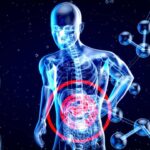dantechviews.com – Strange but True. Maybe that’s the impression that comes to your mind after hearing about a rare disease. Apart from having unique symptoms, rare diseases are sometimes fatal and cannot be treated. Come on, get to know some of the rare diseases in the world with unique symptoms below!
Rare diseases are diseases that occur rarely or have a very small number of sufferers. A study states that there are at least more than 7,000 rare diseases suffered by 8-10% of the world’s population. This means that there are around 500 million people in the world who suffer from this rare disease.
Several Types of Rare Diseases That Are Unheard of
Of the many rare diseases that exist in the world, here are some of them:
1. Progeria
Progeria is a rare disease that can occur in children. This disease makes a child’s body age quickly. This is caused by abnormal genetic changes in the child’s body. But unfortunately, it is not yet known exactly what triggers these genetic changes.
Progeria can be recognized by the appearance of a number of symptoms. At the age of 1 year, children born with progeria usually experience hair loss and growth retardation.
Other symptoms that children with progeria can experience are narrow facial features, small jaws, protruding eyes, loud voices and hearing problems. Apart from that, progeria can also cause sufferers to experience muscle problems, brittle bones and stiff joints.
2. Riley Day Syndrome
You may have wondered, are there people who cannot feel pain? The answer is there, namely in people who suffer from Riley Day syndrome. The immunity to pain experienced by Riley Day syndrome sufferers is the result of disruption of the sensory nervous system.
This nervous system plays a role in controlling a person’s ability to taste, feel hot or cold, including feeling pain. This condition is usually caused by genetic disorders.
Apart from the sensory nervous system, Riley Day syndrome can also disrupt the central nervous system and autonomic nervous system which function to control breathing, digestion, body temperature, blood pressure and tear production.
Some of the symptoms that arise due to disruption of these two nervous systems are abnormal blood pressure, shortness of breath, not producing tears when crying, diarrhea, and difficulty speaking.
This disease is very rare. Some cases are only found in Eastern European countries or in people who have ancestors from Eastern Europe.
3. Alien hand syndrome
The main symptom of alien hand syndrome is not being able to control hand movements. The hand will move by itself, as if someone is moving it or as if it has its own control. In certain cases, this uncontrolled movement even occurs in the legs.
Alien hand syndrome can be caused by several things, for example after having a stroke, cancer, brain problems, or after undergoing brain surgery.
4. Xeroderma pigmentosum (XP)
This rare disease is characterized by a number of skin disorders, such as redness, burning, blistering and pain, due to exposure to sunlight even for a short time. Therefore, people living with this rare disease must avoid exposure to sunlight completely.
Xeroderma pigmentosum appears due to a genetic disorder inherited from parents. This genetic disorder makes the body unable to repair or replace DNA damaged by exposure to sunlight.
Only 1 in 250 thousand people in the world suffers from xeroderma pigmentosum. Several studies show that this disease is more common in Japan and several countries in Africa.
5. Duchenne muscular dystrophy
This disease is also called Duchenne muscular dystrophy. This rare disease is almost entirely experienced by men. This muscular dystrophy occurs due to a genetic disorder that causes the body’s muscles to not grow and function normally.
This disease usually begins to cause complaints and symptoms in children around the age of 3-4 years. Symptoms of this disease can include growth and development disorders, and weakness of the pelvic, leg and shoulder muscles, difficulty walking, and learning disorders.
Until now, there is no known effective way to treat the various rare diseases above. To anticipate the possibility of this disease, early detection can be carried out while the fetus is still in the womb, namely by consulting a doctor and carrying out a genetic test.





Leave a Reply